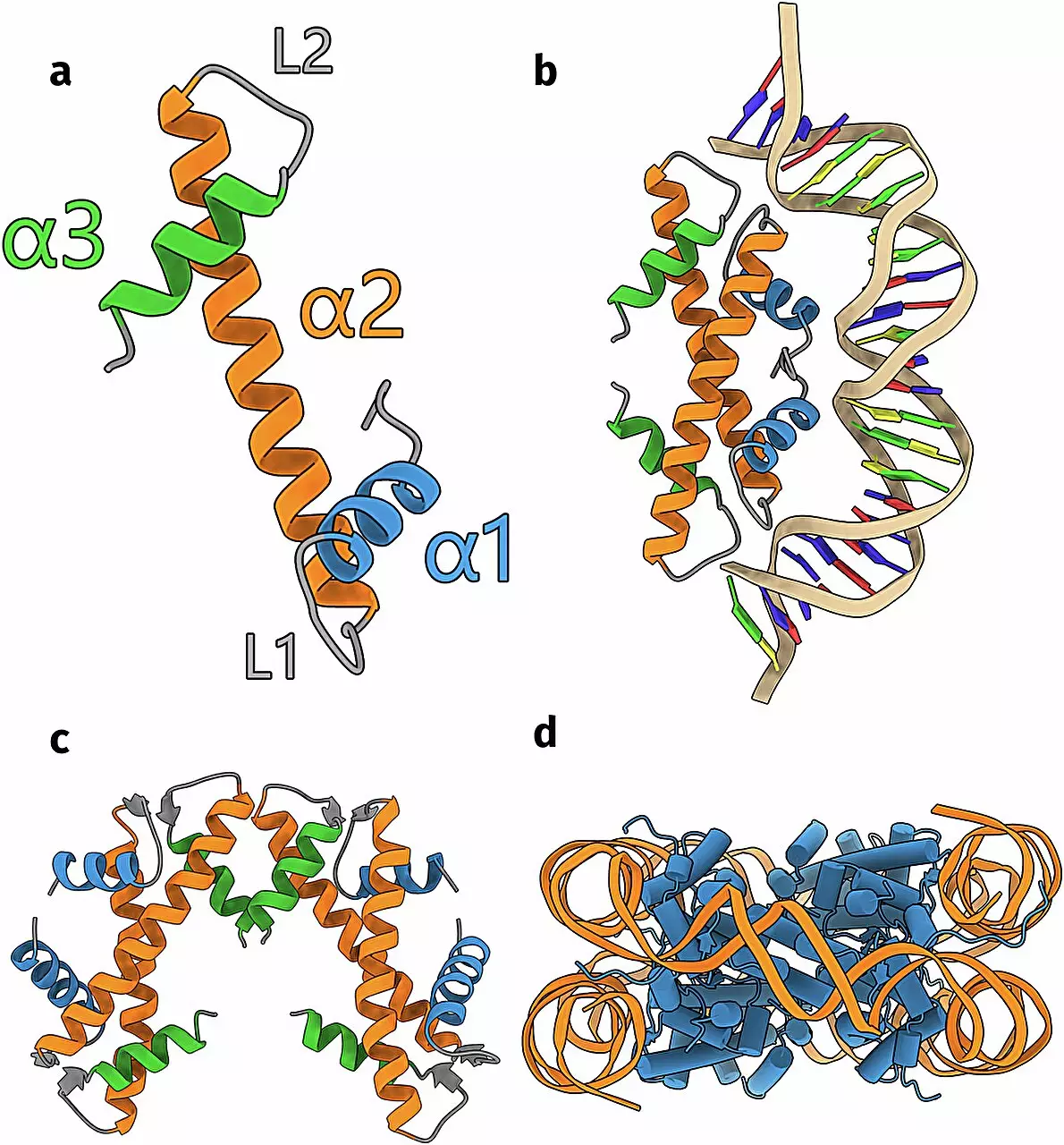The advent of advanced genomic tools has drastically shifted our perspective on cellular biology, particularly regarding the roles of histones in single-celled organisms such as bacteria and archaea. Recent research led by Leiden University Ph.D. candidate Samuel Schwab has unveiled startling revelations about the diversity and function of histones in these organisms. The findings, detailed in the esteemed journal *Nature Communications*, provide a fresh understanding of how these simpler life forms organize their genetic material, turning long-held assumptions on their head.
Histones have long been considered the hallmark of complex organisms, serving as essential proteins that package and organize DNA into a compact structure. Traditionally, scientists believed that this function was limited to multicellular organisms. However, Schwab’s discovery that both archaea and bacteria, which lack a nucleus, also utilize histones marked a significant turning point in molecular biology. The versatility and prominence of histones has now been effectively demonstrated in these single-celled entities, challenging the historical narrative and expanding our knowledge of cellular mechanisms.
The well-structured nucleosomes, which comprise DNA wound around histone proteins, play a crucial role in DNA compaction. Schwab’s work highlights that the recipes embedded within the genomes of archaea and bacteria yield not only known histone proteins but a variety of novel structures. This wealth of previously underappreciated variation indicates a complex evolutionary trajectory that lends itself to further investigation.
One of the most innovative aspects of this research lies in the application of artificial intelligence, specifically the deep learning algorithm AlphaFold. This groundbreaking program has revolutionized how scientists predict protein structures based on genetic sequences. Schwab took on the ambitious task of mining a substantial protein database to uncover approximately 6,000 DNA sequences that could potentially encode unknown histones in single-celled organisms.
The pairing of historical biological insights with cutting-edge AI has led to substantial advancements in understanding protein diversity. Using the computational power of the Leiden supercomputer facility ALICE in conjunction with AlphaFold, Schwab and his team successfully predicted the structural configurations of the histones associated with those genetic sequences. The results revealed a previously unimagined array of histones that not only confirmed existing knowledge but also introduced completely novel forms.
To substantiate the computational predictions, the researchers undertook lab-based experiments to experimentally determine the structure of one newly identified histone group. The experimental results closely mirrored those generated by AlphaFold, confirming the efficacy of this AI-driven approach. Such consistency between predicted and actual structures showcases the capabilities of AI in biological research and sets the stage for additional inquiries into the potential functional roles played by the various histone types.
While many histones primarily function as structural proteins that compact DNA, the research has also uncovered intriguing instances where certain histones may bind not just to DNA but to cellular membranes as well. This revelation indicates that some histones may serve functions beyond DNA organization, thus opening new avenues for understanding cellular operations and the intricacies of molecular interactions within single-celled organisms.
This pioneering research has broader implications for the field of evolutionary biology. By delineating the diversity and functions of histones in single-celled organisms, Schwab’s work facilitates a deeper comprehension of the evolutionary pathways that have shaped genetic material organization across life forms. The ability to draw parallels between the clustering of DNA and histone functionality invites a reevaluation of how we interpret genetic data, especially in the context of evolutionary adaptations.
Despite these advances, Schwab emphasizes that the journey is far from over. There remains a robust need for further studies aimed at elucidating the precise roles of these newly identified histones within cellular contexts. Such exploration is critical as scientists endeavor to piece together the intricate puzzle of genetic material management and the underpinnings of cellular life.
In summation, the findings presented by Schwab not only enhance our understanding of histones but also exemplify how innovative technology and collaborative research can catalyze groundbreaking insights in biology. As we explore these newfound domains in cellular organization, we inch closer to unraveling one of nature’s deepest mysteries—the inner workings of life at the molecular level.

